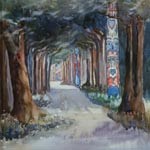
Alaska Region: Indian River Park, Sitka National Historical Park
Creation of the Totem Walk was influenced by the 19th century public park movement and Governor John Brady's efforts to collect and showcase these icons of indigenous heritage. After a tour to the continental U.S. for display, the poles returned to their place in the Alaskan park. Canadian artist Emily Carr's paintings express the impact of the experience of this landscape.
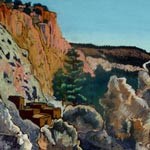
Intermountain Region: Frijoles Canyon, Bandelier National Monument
Frijoles Canyon, located in New Mexico, contains a collection of prehistoric and historic features. The canyon is associated with Ancestral Pueblo peoples, scholars, explorers, farmers, the National Park Service, and New Deal employees. In the 1930s, the park commissioned artists to paint the landscape as part of the Works Progress Administration's art program.
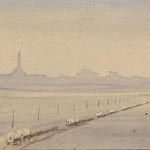
Midwest Region: Scotts Bluff National Monument
In the mid-1800s, large numbers of emigrants set off across the west with the hope of a better life. Many followed routes first established by Native Americans and fur traders. The Oregon and California Trails passed by the well-known landmark Chimney Rock and through Mitchell Pass, between Scotts Bluff and South Bluff. This view was painted by William Henry Jackson, who became familiar with the trail when he worked on a wagon train in 1866.
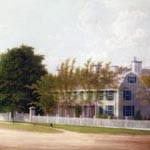
Northeast Region: Peace field, Adams National Historical Park
The site that is now Adams National Historical Park in Quincy, Massachusetts was home to four generations of the Adams family from 1787 to 1927. The site evolved from a working farm into a country estate with ornamental plantings and manicured lawns. German-born landscape painter Godfrey Frankenstein painted Peace field in Portrait of the Old House in 1849.
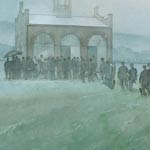
National Capital Region: Harpers Ferry National Historical Park
In 1906, the Niagara Movement held its first public meeting in the United States at Storer College in Harpers Ferry. It was near here that John Brown had attempted to initiate a slave uprising in 1859 by organizing a raid on the U.S. Armory. This painting shows the delegates making a sunrise pilgrimage to John Brown's Fort when it stood at the Murphy Farm.
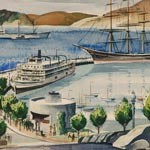
Pacific West Region: Aquatic Park, San Francisco Maritime National Historical Park
In the 1930s and '40s, the Federal Works Progress Administration and the City of San Francisco Department of Public Works developed Aquatic Park, which is composed of a large lawn, several buildings in the streamline Art Moderne style, the Municipal Pier, and a seawall. California artist Hubert Buel captured the stunning views in this 1949 watercolor.
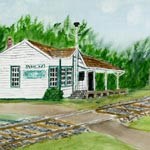
Southeast Region: Plains Train Depot, Jimmy Carter National Historic Site
James Earl "Jimmy" Carter, Jr. was born in the rural southern community of Plains, Georgia in 1924. When he ran for governor and, later, president, the Plains Train Depot along the railroad tracks became his headquarters. It became a backdrop for campaign announcements and press conferences, and he marked both victories and defeats here.
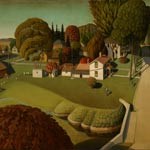
Herbert Hoover National Historic Site
Herbert Hoover National Historic Site in West Branch, Iowa preserves the birthplace of the 31st President of the United States. The rural setting represents a typical nineteenth- and early-twentieth century Iowa farmstead, where Hoover lived from his birth in 1874 and where he is now buried. The birthplace is captured in Grant Woods's painting, created by the Iowa-born artist in 1931.
Last updated: October 6, 2021

